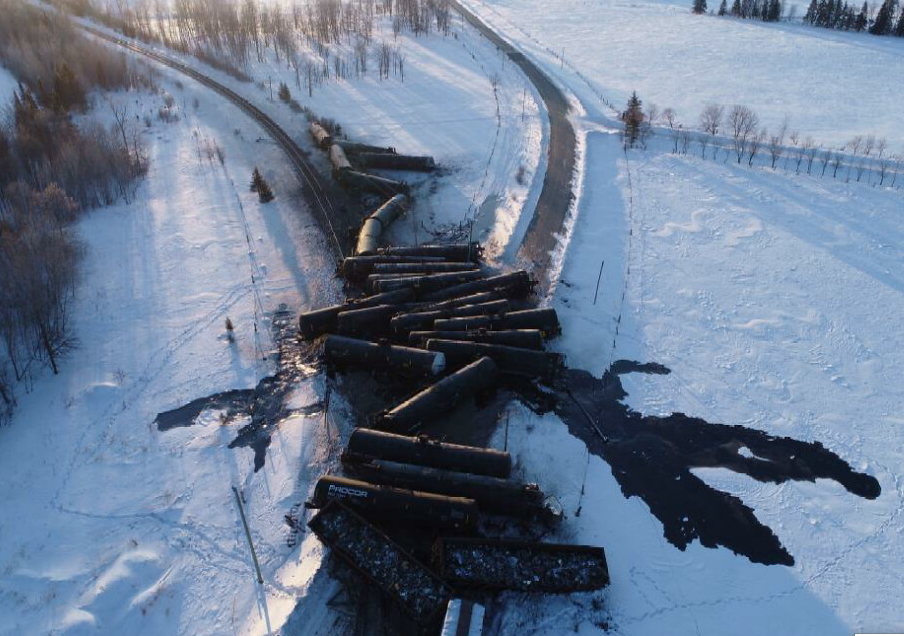EMO, Ont. - A buildup of ice on the tracks is said to have caused the Canadian National Railway train derailment outside of Emo, Ont. early last year.
A report by the Transportation Safety Board of Canada has been released and following an investigation the TSB determined the cause of the derailment to be a phenomenon known as ice jacking.
“A combination of weather conditions and track conditions is required for ice jacking to develop. In winter, roadway snow clearing activities frequently push road sand, salt, and snow off to the ends of a crossing and onto railway tracks,” the report reads.
The derailment took place on Feb. 18, 2020 just outside of Emo. A CN freight train was travelling eastbound at approximately 44 miles per hour and negotiating a four-degree left-hand curve over an automated crossing on Highway 602.
A train-initiated emergency air-brake application occurred and the crew issued an emergency radio broadcast.
When the train came to a stop, crews observed a derailment had occurred. There were 33 cars in total that derailed, 23 being tanker cars and six leaking crude oil, resulting in the evacuation of several nearby homes. According to the report, approximately 320,000 litres of oil was spilled.
An examination of the site determined there was no mechanical defects with the rolling stock and track inspections exceeded the minimum requirements. Data from the locomotive event recorder also showed the train was "handled in accordance with regulatory and company requirements, with no operating anomalies noted."
However, ice and snow build-up was observed adjacent to the south rail, which can occur during winter operations.
“Closer examination revealed that the snow and ice had built up between the underside of the rail base and the tie plate rail seats,” the report reads.
“This caused the rail to become unseated from the tie plate and left the rail susceptible to gauge spreading under the load of the train, which led to the derailment. This is a phenomenon commonly referred to in the rail industry as ‘ice jacking.’”
The area also experienced several freeze/thaw cycles, with temperatures varying between -27 degrees and -6 degrees.
“When the track is exposed to freeze/thaw cycles, this can contribute to ice build-up along the base of the rail,” the report reads.
Trains passing over rains can also create a pumping action that can “promote water ingress between the underside of the rail base and the tie plate rail seat, where the water freezes.”
“When a number of these cycles occur, it can produce a build-up of ice that physically lifts the rail from the tie plate rail seat, which makes the rail susceptible to gauge spreading when subjected to loading as a train passes. The TSB has observed this phenomenon in at least 1 other investigation.”
There were no injuries as a result of the derailment. The TSB considers this investigation concluded.
Fort Frances City Council passed a resolution following the derailment expressing concerns about rail safety in the Rainy River District, citing six previous derailments between Fort Frances and Chapple Township since 2013 investigated by the TSB.
The resolution also requested officials with CN appear before a local forum to address rail safety concerns, but according to a councilor no officails with CN have responded to the request.
Township officials in Emo also raised concerns about the speed of trains travelling in the area, calling for speeds to be reduced.
The oil contaminated soil from the derailment site was transported to the Lappe Industrial Waste Disposal Site.
